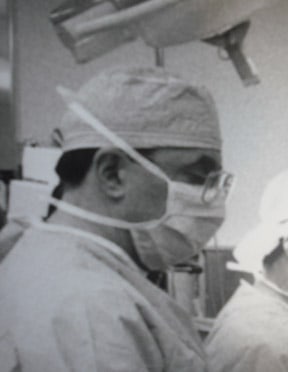Written by Physician’s Weekly blogger, Skeptical Scalpel
Since 1975, California has had a $250,000 cap on pain and suffering in medical malpractice cases. A recent case illustrates how a plaintiff’s attorney overcame that barrier.
According to the medical website, MPR, a man was being followed by a urologist for a small scrotal mass, which enlarged over 3 months. The urologist recommended removal. The patient was told a small incision would be made.
Two consent forms were signed. One was for local excision of the scrotal mass and possible cystoscopy and the other authorized the patient’s wife to make decisions for him if he was not able to do so.
At surgery, the urologist found that the mass was larger than expected and had extended into the patient’s penis.
Without notifying the patient’s wife, the urologist excised the large mass which included substantial portions of the penis.
The pathology report was a benign cystic lymphangioma. The patient and his wife were distraught. Despite numerous subsequent operations to correct the damage to the penis, he remained permanently impaired. He and his wife eventually divorced.
The patient obtained a lawyer who sued the urologist for both medical malpractice and medical battery.
The plaintiff and defense expert witnesses had never seen a cystic lymphangioma case like this. Not surprisingly, the plaintiff’s expert said the urologist had not met the standard of care, while the defense expert said he had.
Plaintiff’s attorney said the patient signed for a specific procedure and ended up with a markedly different one. He asked the jury to send a message that the patient is in control and that “damages to a human being are significant and need to be properly compensated!”
The jury responded with an award of $9,250,000 for non-economic damages plus $22,000 for economic damages. Defendant’s attorney moved to reduce the non-economic award to the cap of $250,000, but the judge declined to do so stating the cap did not apply to medical battery. An appeal is pending.
When confronted with a more extensive lesion than anticipated, what should the urologist have done? Here are some options:
- After taking a small piece of tissue for biopsy, he could have aborted the case.
- He could have called another urologist into the operating room for a second opinion.
- He should have contacted the patient’s wife (why did he get the second consent if he wasn’t going to use it?) to discuss going ahead with excision of the mass.
- If the wife had refused to consent to the escalation of the procedure, he should have closed and considered sending the patient to a tertiary care center.
This case raises some important questions.
- If you had been the surgeon in this case, what would you have done?
- Do you think this patient deserved more than $250,000 in noneconomic damages?
- Is a $250,000 cap on damages established 45 years ago a realistic amount of money?
- Will the damages in this case be reduced on appeal?
Skeptical Scalpel is a retired surgeon and was a surgical department chair and residency program director for many years. He is board-certified in general surgery and a surgical sub-specialty and has re-certified in both several times.For the last 9 years, he has been blogging at SkepticalScalpel.blogspot.com and tweeting as @SkepticScalpel. His blog has had more than 3,700,000 page views, and he has over 21,000 followers on Twitter.



 SkepticalScalpel
SkepticalScalpel